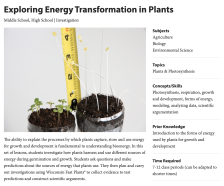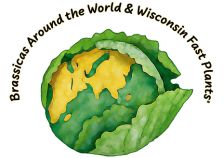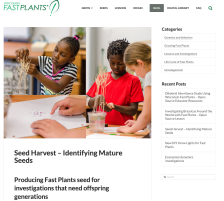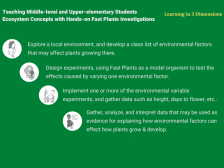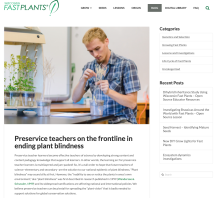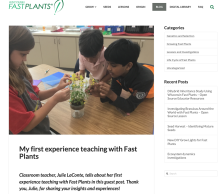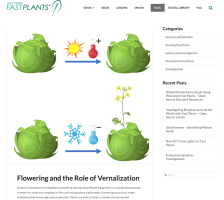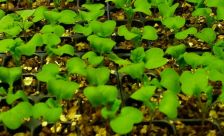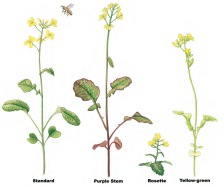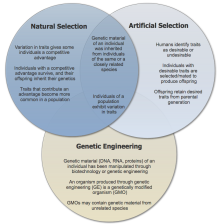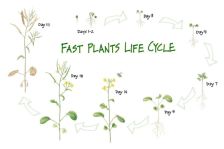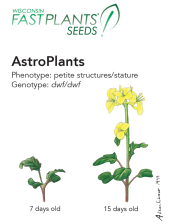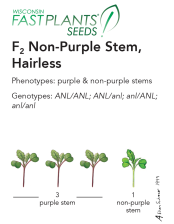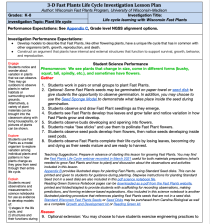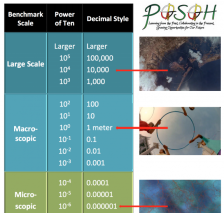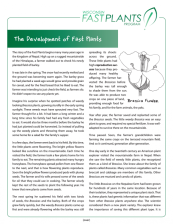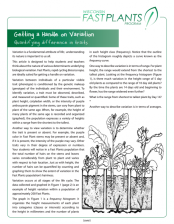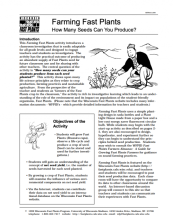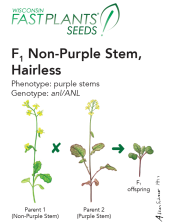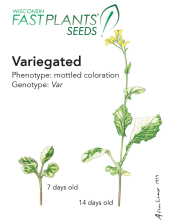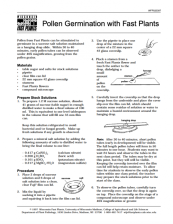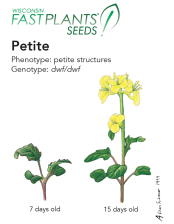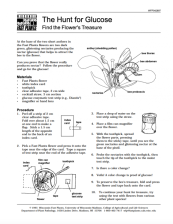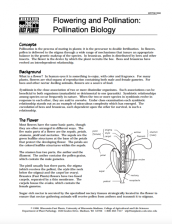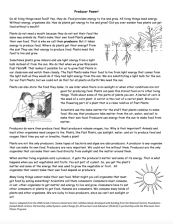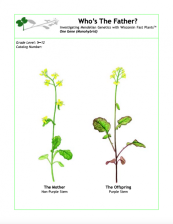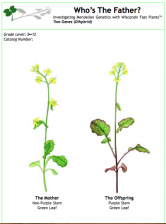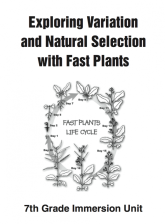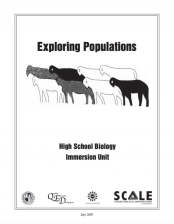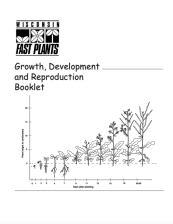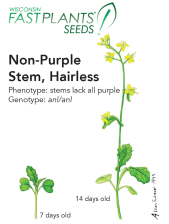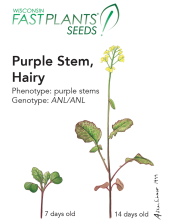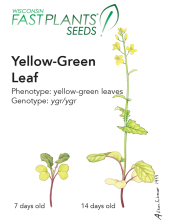Browse Resources
(2 classifications) (37 resources)
Educational Resources -- Grade Level: Middle School
| Classic Middle Level Resources (developed before the year 2010)
(6)
Current Middle Level Resources (19) |
Resources | |
|---|---|
In this set of lessons and Fast Plants experiment, students investigate how plants harness and use different sources of energy during germination and growth. Students ask questions and make predictions about the sources of energy that plants use. They then plan and carry out investigations using...
This blog post from the Wisconsin Fast Plants features open source educator resources, developed in 2023. These NGSS- and Ag-Standards aligned resources, named Investigating Brassicas Around the World with Fast Plants include a full lesson plan with supporting plant breeding activities, video about...
This blog post from the Fast Plants team provides detailed advice and instructions on the ideal timing for harvesting Fast Plants seeds. It is important to harvest at the correct time, to ensure maximum seed viability for planting the next generation. This post addresses several frequently asked...
This blog post from the Wisconsin Fast Plants website features an NGSS-aligned Open Source Lesson Plan for Investigating Ecosystem Dynamics with Fast Plants. The featured lesson plan is available to be downloaded and edited as needed via Google Drive. The investigation challenges students to gather...
This blog post on the Fast Plants website discusses the concept of plant blindness (the inability to see or notice the plants in one's own environment) and the importance of ending plant blindness and supporting plant vision. Fast Plants are an effective introduction to growing and noticing plants:...
This blog post from the Wisconsin Fast Plants website is a guest post by classroom teacher, Julie LaConte, of Rossman School in Creve Coeur, MO. In this post, Julie describes her experiences researching, preparing for, and teaching with Fast Plants in her classroom. Thank you for sharing your...
This blog post from the Wisconsin Fast Plants website describes the value of using Fast Plants as a model organism for biological and environmental investigations. This post is primarily an index of Fast Plants resources, providing prompts for teaching goals and suggesting Fast Plants kits...
This blog post from the Fast Plants Team addresses the question "Do Fast Plants need Vernalization to Flower?". This post describes the concept of vernalization (requiring a cold period to induce flowering) and its role in regulating the development of flower structures in flowering plants. Some...
This blog post from the Wisconsin Fast Plants website provides an overview and list of resources for teaching about observable variation and measuring selection (focusing on leaf hairs/trichomes). This blog is primarily a point of reference for other Fast Plants teaching resources.
This blog post from the Wisconsin Fast Plants website provides an overview and list of resources for teaching about heredity and inheritance patterns with Fast Plants seed varieties. This blog is primarily a point of reference for other Fast Plants teaching resources, but includes specific detail...
This blog post from the Wisconsin Fast Plants website provides an overview and list of resources for teaching life science topics with Wisconsin Fast Plants. This blog is primarily a point of reference for other Fast Plants teaching resources.
This blog post from the Fast Plants Team addresses the question "Are Wisconsin Fast Plants Genetically Engineered Plants?". This post describes the origins of Fast Plants (they are the result of conventional plant breeding, not genetic engineering), defines terms related to plant breeding and...
This blog post from the Wisconsin Fast Plants website describes the value of using Fast Plants as a model organism to teach plant life cycles at multiple grade levels. Content includes an overview of plant growth stages (including videos) and links to resources and activities that can enrich...
This is a page on the Fast Plants website, describing the AstroPlants variety of Fast Plants (Brassica rapa). This page includes suggestions for investigations and teaching applications using this seed variety.
This is a page on the Fast Plants website, describing the F2 Non-Purple Stem variety of Fast Plants (Brassica rapa). This page includes suggestions for investigations and teaching applications using this seed variety, including use as a model organism in teaching Mendelian genetics with a monohybrid...
This comprehensive Open Source lesson plan is designed for Kindergarten through Middle School level students to learn about life cycles, plants needs, and plant structures & their functions through hands-on investigations with Wisconsin Fast Plants. Depending on the grade level, students engage at...
This is a printable poster resource developed by a collaboration of educators in the POSOH Project for teaching about systems and scale. This poster correlates with an excerpt from the video Cosmic Voyage about systems and scale, narrated by Morgan Freeman. A debrief discussion of that video excerpt...
Sign up for a free account on the Gizmo website (https://www.explorelearning.com/index.cfm?method=Controller.dspFreeAccount) for free access to two simulations that were collaboratively developed by the teams at Explore Learning and the Wisconsin Fast Plants Program of the University of...
This is "The Story of Fast Plants" - a short story of the origins of Brassicas and the work of Dr. Paul Williams, developing Brassica rapa. Reading level ~7th grade.
This article is designed to help students and teachers think about the nature of various determinants underlying biological variation. Teachers facilitating any selection investigation will find this background information helpful, including those planning for the AP Biology Lab 1 of Big Idea 1:...
This Farming Fast Plants activity introduces a classroom investigation that is easily adaptable for all grade levels and designed to engage teachers and students as investigators. The activity has the practical outcome of producing an abundant supply of Fast Plants seed for future classroom use and...
This is a page on the Fast Plants website, describing the F1 Non-Purple Stem variety of Fast Plants (Brassica rapa). This page includes suggestions for investigations and teaching applications using this seed variety, including use as a model organism in teaching Mendelian genetics with a monohybrid...
This is a page on the Fast Plants website, describing the Non-Purple Stem, Yellow-Green Leaf variety of Fast Plants (Brassica rapa). This page includes suggestions for investigations and teaching applications using this seed variety.
This is a page on the Fast Plants website, describing the Variegated variety of Fast Plants (Brassica rapa). This page includes suggestions for investigations and teaching applications using this seed variety.
Protocol for germinating Fast Plants pollen in a sucrose-salt solution
This is a page on the Fast Plants website, describing the Petite variety of Fast Plants (Brassica rapa). This page includes suggestions for investigations and teaching applications using this seed variety.
Background information and activity investigating the Fast Plant nectaries and their functions.
This pdf includes background information and an activity for engaging students in the processes that occur during pollination, fertilization and seed development in Fast Plants. Pollination is explained and illustrated and an activity for students to pollinate Fast Plants and observe reproductive...
An article written for children, this reading explains the role of plants as producers. It is written at a grade 4-5 reading level, and it is a good supplement to the evidence that students can observe and record through experimentation with photosynthesis.
In this investigation, students will gather their own evidence to explain how inheritance works. As they observe three generations of Wisconsin Fast Plants, students will unravel a mystery of paternity: What is the father’s phenotype? Is it the same as the mother’s phenotype or the offspring’s...
Download the complete instructions for a high school level inheritance and genetics inquiry, using Wisconsin Fast Plants. In this investigation, students gather their own evidence to explain how inheritance works. As they observe three generations of Wisconsin Fast Plants, students unravel a...
Download this complete and coherently designed, middle school level unit to teach fundamental concepts that underpin the theory of evolution. The unit was collaboratively designed by teachers, college faculty & staff, and the Fast Plants Program at UW-Madison to support student-centered...
This Immersion Unit provides a coherent series of lessons designed to guide students in developing deep conceptual understanding that is aligned with the standards, key science concepts, and essential features of classroom inquiry (as defined by the National Science Education Standards).
Unit...
A 32-page booklet, containing complete instructions for activities at each life cycle stage. The booklet also includes important background information about plant physiology and how to grow Fast Plants. A Growth, Development and Reproduction kit is available. You can also conduct all the...
This is a page on the Fast Plants website, describing the Non-Purple Stem Hairless variety of Fast Plants (Brassica rapa). This page includes suggestions for investigations and teaching applications using this seed variety.
This is a page on the Fast Plants website, describing the Purple Stem, Hairy variety of Fast Plants (Brassica rapa). This page includes suggestions for investigations and teaching applications for using this seed variety.
This is a page on the Fast Plants website, describing the Yellow-Green Leaf variety of Fast Plants (Brassica rapa). This page includes suggestions for investigations and teaching applications using this seed variety.
| |
